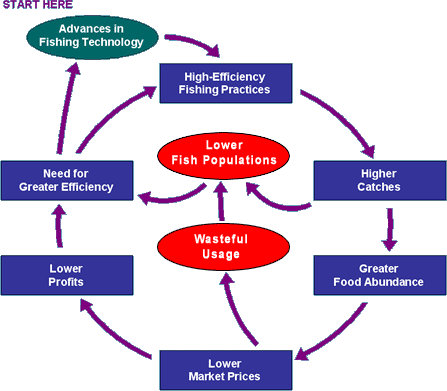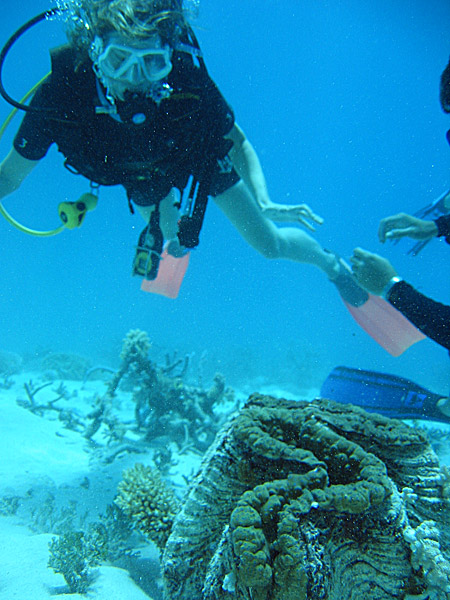Effects of Climate Change on the Great Barrier Reef
Climate change has had a significant impact on the marine environments throughout the world. Global warming is caused by the increase in greenhouse gases in the atmosphere.
- These greenhouse gases trap in solar radiation to keep the heat within the atmosphere of the earth. Due to the industrial era, greenhouse gases levels have escalated in the past century.
- The result is intensified solar radiation and higher temperatures throughout the planet, which has a negative effect on marine ecosystems.
- Higher temperatures will melt the polar ice caps and raise the sea level, some have predicted sea level to rise up to 80cm by the end of the century (AU).
- The increased UV radiation will hinder the ability of plants and algae to photosynthesize. The result of this is that less energy is available overall in the marine ecosystems. Climate change has a fatal impact on the oceanic environment and more specifically harm the coral reef ecosystems.
Pollution
Another significant impact humans have had on the coral reef ecosystems in the Great Barrier Reef is its pollution problem. There are numerous ways humans have added harmful pollutants into our oceans that can cause serious damage to the fragile ecosystems of the coral reefs.
- Deforestation, although not directly involved in coral reef destruction, has many indirect effects that cause many issues. Sediment runoff will bring with it many natural and toxic components that can cause harm to the coral ecosystems. There is also sedimentation buildup that occurs at the mouth of the rivers that lead into the oceans. (Coral Reefs, 2004)
- Another major pollutant is runoff from mining and farming where the minerals get into rivers that flow into the ocean. Farming has specific negative effects with this type of pollution because of the nutrient runoff from the fertilizers used. These fertilizers add nitrogen and phosphorous into the oceanic ecosystem. These nutrients cause massive algae growth that leads to depletion in oxygen available for other creatures and decreasing the biodiversity in those affected areas. (Bell RPF, 1992) It also leads to algae blooms that take over sections of coral, blocking the sunlight and hurting its ability to survive.
- The coral reefs also have a hard time surviving through human pollution by petroleum leaks and other chemicals that get dumped into the oceans because of its toxicity to the environment.
Overfishing
Reefs are suffering directly and indirectly from the increasing pressure of mans' resource exploitation (Reef Education Network). Overfishing is one driving pressure that has had devastating impacts on coral reefs.
- Aggressive fishing methods have hurt coral reefs sometimes beyond repair. However, over-fishing in general is also a damaging problem to many coral reefs around the world.
- Specifically to the Great Barrier Reef, overfishing has caused a shift in the reef ecosystem.
- Overfishing of certain species near coral reefs can easily affect the reef's ecological balance and biodiversity.

Positive Impacts
Tourism
Due to its vast biodiversity, warm clear waters and accessibility from the tourist boats the reef is a very popular destination, especially for scuba divers.
- Tourism on the Great Barrier Reef is concentrated in the Whitsundays and Cairns due to their accessibility. These areas make up 7% of the Park's area.
- Many cities along the Queensland coast offer daily boat trips.
- Domestic tourism made up most of the tourism in the region, and the most popular visiting times were in the Australian winter.
- It was estimated that tourists to the Great Barrier Reef contributed $776 million per year at this time.

Fishing
- The fishing industry in the Great Barrier Reef, controlled by the Queensland Government, is worth $1 billion annually.
- It employs approximately 2000 people, and fishing in the Great Barrier Reef is pursued commercially, for recreation, and as a traditional means for feeding one's family.
Preservation of the Reef
In July 2004, a new zoning plan took effect for the entire Marine Park, and has been widely acclaimed as a new global benchmark for marine ecosystem conservation. The rezoning was based on the application of systematic conservation planning techniques, using MARXAN software. While protection across the Marine Park was improved, the highly protected zones increased from 4.5% to over 33.3%. At the time, it was the largest marine protected area in the world, although in 2006, the new Northwestern Hawaiian Islands National Monument became the largest.
In 2006, a review of the Great Barrier Reef Marine Park Act 1975 recommended are that there should be no further zoning plan changes until 2013, and that every five years, a peer-reviewed Outlook Report should be published, examining the reef's health, management, and environmental pressures. In each outlook report, several assessments are required. Each assessment has a set of assessment criteria that allows for better presentation of available evidence. Each assessment is judged by these criteria and given a grade. Every outlook report follows the same judging and grading process so that information can be tracked over time. No new research is done to produce the report. Only readily available information goes into the report so little of what is known about the Reef is actually featured in each outlook report.